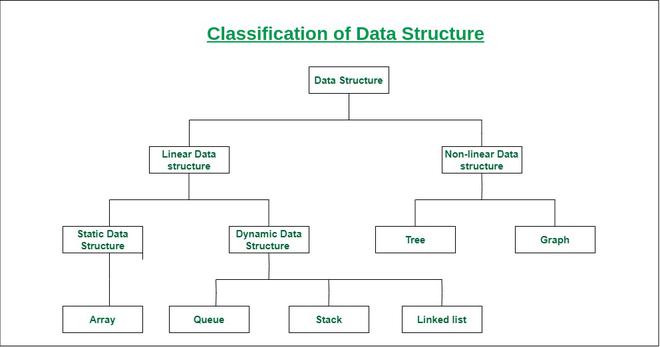What is Data Structure?
Last Updated :
07 Jul, 2023
A data structure is a way of organizing and storing data in a computer so that it can be accessed and used efficiently. It refers to the logical or mathematical representation of data, as well as the implementation in a computer program.
Classification:
Data structures can be classified into two broad categories:
- Linear Data Structure: A data structure in which data elements are arranged sequentially or linearly, where each element is attached to its previous and next adjacent elements, is called a linear data structure. Examples are array, stack, queue, etc.
- Non-linear Data Structure: Data structures where data elements are not placed sequentially or linearly are called non-linear data structures. Examples are trees and graphs.

Classification of Data Structure
To learn more about different data structures, refer to this article.
Applications of Data Structures:
Data structures are used in a wide range of computer programs and applications, including:
- Databases: Data structures are used to organize and store data in a database, allowing for efficient retrieval and manipulation.
- Operating systems: Data structures are used in the design and implementation of operating systems to manage system resources, such as memory and files.
- Computer graphics: Data structures are used to represent geometric shapes and other graphical elements in computer graphics applications.
- Artificial intelligence: Data structures are used to represent knowledge and information in artificial intelligence systems.
Advantages of Data Structures:
The use of data structures provides several advantages, including:
- Efficiency: Data structures allow for efficient storage and retrieval of data, which is important in applications where performance is critical.
- Flexibility: Data structures provide a flexible way to organize and store data, allowing for easy modification and manipulation.
- Reusability: Data structures can be used in multiple programs and applications, reducing the need for redundant code.
- Maintainability: Well-designed data structures can make programs easier to understand, modify, and maintain over time.
What else can you read?
Like Article
Suggest improvement
Share your thoughts in the comments
Please Login to comment...